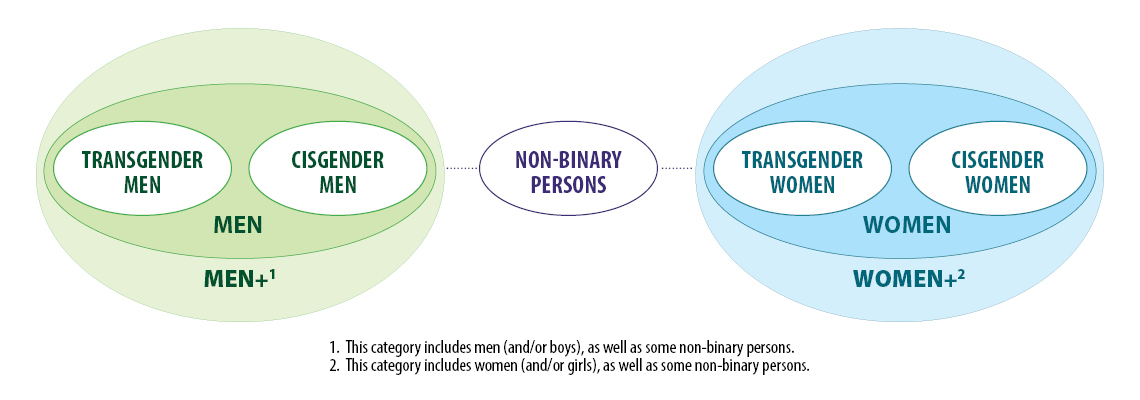Filling the gaps: Information on gender in the 2021 Census
Start of text box 1
Gender: an individual’s personal and social identity as a man, woman or non-binary person
Sex at birth: typically assigned at birth based on a person's reproductive system and other physical characteristics
Cisgender person: a man or woman whose gender corresponds with sex assigned at birth
Transgender person: a man or woman whose gender does not correspond with sex assigned at birth
Non-binary person: an individual who is not exclusively a man or a woman, for example, agender, fluid, queer, or Two-Spirit
End of text box 1
For the first time on April 27, 2022, Statistics Canada will disseminate census information on gender.
Prior to the 2021 Census, some individuals expressed that they were not able to see themselves in the two existing responses of male and female on the sex question in the census. Following extensive consultation and country-wide engagement with the Canadian population, as well as testing of new content, the census evolved—as it has for more than a century—to reflect societal changes.
For the 2021 Census, the precision of ‘at birth’ was added to the sex question on the census, and a new question on gender was included.
These changes allow all persons living in Canada to identify through the census. Also, the historical continuity of information on sex is maintained, while allowing all men, women, and non-binary persons to be counted, addressing an important knowledge and information gap.
These modifications related to sex at birth and gender reflect a growing social and legislative recognition of transgender and non-binary people. In 2017, the Canadian government amended the Canadian Human Rights Act and the Canadian Criminal Code to protect individuals from discrimination and hate crime based on gender identity and expression. These changes are consistent with the Treasury Board of Canada Secretariat’s Policy Direction to Modernize the Government of Canada’s Sex and Gender Information Practices (2018).
Statistics Canada protects the privacy and confidentiality of all individuals while providing relevant data for decision-making. As of April 27, 2022, Statistics Canada will begin disseminating information on gender diversity status (cisgender men and women, transgender men and women, and non-binary persons), or on men, women and non-binary persons, at higher levels of geography.
Data aggregation to a two-category gender variable will sometimes be necessary to protect the confidentiality of responses provided.

Description for Figure 1
The infographic presents a diagram that shows different oval shapes. These ovals display the different categories used to describe the gender variables, with two or three categories, as well as the gender diversity status variable. The two-category gender variable includes “men+” and “women+.” The three-category gender variable includes “men,” “women” and “non-binary persons.” The gender diversity status variable is composed of “cisgender men,” “transgender men,” “cisgender women,” “transgender women” and “non-binary persons.” The categories of “men+” and “women+” are shown in the diagram by the two largest oval shapes and are connected by the “non-binary persons” category. The “men” category is found within the “men+” category and is composed of transgender men and cisgender men. The “women” category is found within the “women+” category and is composed of transgender women and cisgender women.
Footnotes are included for “men+” and “women+.” The first footnote, which is included for “men+,” indicates that “this category includes men (and/or boys), as well as some non-binary persons.” The second footnote, which is included for “women+,” indicates that “this category includes women (and/or girls), as well as some non-binary persons.”
Start of text box 2
Canada is a world leader in producing statistical information on gender, providing data on gender diversity from the Census. These data can be used by public decision-makers to inform policies and programs, employers, and providers of healthcare, education, justice, and other services to better meet the needs of all persons living in Canada.
For more information
End of text box 2
- Date modified: